How Indian health-care workers use WhatsApp to save pregnant women
Hirabai Koli’s medical reports were normal—but she wasn’t happy.
She had been monitoring her weight over the first two months of her pregnancy, and she surprised community health-care worker Suraiyya Terdale when she asked why she wasn’t gaining more. (To protect her safety and private health information, Koli is being identified by a pseudonym.)
“It was an odd question—something I heard for the first time,” says Terdale. She then remembers Koli saying, “Someone told me that if the pregnant mother’s weight isn’t increasing fast, then it’s a girl child.”
Over 13 years of helping hundreds of women with childbirth in the Ganeshwadi village of Maharashtra, India’s second-most populous state, Terdale had heard a lot of medical misinformation, but never this particular myth. Terdale is an accredited social health activist, or ASHA—part of an all-women cadre of 1 million community health-care workers. Across India’s villages, one ASHA is appointed for every 1,000 people; they are responsible for over 70 health-care tasks and make public health care accessible to people from remote areas and marginalized communities.
Countering false information has become an increasingly important, if unofficial, part of the job for each ASHA. Medical misinformation is rampant in the country, especially in remote villages like Ganeshwadi, which has a population of just a few thousand.
Experience told Terdale that countering Koli’s beliefs without context could backfire. “If you tell someone they are wrong, then people don’t listen,” she says.
Indeed, when Terdale told Koli that her understanding was unscientific, Koli wasn’t convinced. Instead, Koli asked if she knew of any doctor who could confirm if it was a male fetus, even though the Indian government banned prenatal sex-determination tests in 1994 in response to the high rate of abortions of female fetuses.
So Terdale began doing the tricky work of probing why Koli believed this. After several rounds of trust-building conversations, Terdale learned that Koli was a victim of domestic violence and sexual abuse because her first child had been female. “My in-laws taunt me every day for giving birth to a girl,” Koli told her. “It has been so traumatic that I won’t be able to survive if it’s another girl child.”
After, Koli’s requests to get a prenatal sex determination became more frequent, and Terdale decided to turn to the most accessible and discreet way to help her: WhatsApp. She sent Koli “scientific videos of what decides the biological sex of a child,” but “none of it made sense to her,” says Terdale. “The videos were in English, but I am sure the animation helped to a certain extent.” After further digital and in-person interventions, Terdale was finally able to convince Koli she wasn’t responsible for the sex of the child.
Terdale is one of many ASHAs across the country who are turning to WhatsApp as a means to combat medical misinformation and navigate sensitive medical situations, particularly regarding pregnancy. Even though ASHAs weren’t trained to do this, are paid very little, and are at the mercy of India’s poor health-care infrastructure, the approach has had surprisingly good results. In 2006, India’s maternal mortality rate was 254 deaths per 100,000 live births, one of the highest in the world. By 2020, ASHAs had helped slash the maternal mortality rate by over 60%, to 96 per 100,000 live births. This is particularly significant, because for a rural population of 833 million, India only has 763 functioning district hospitals, with just under 27,000 doctors.
But the work of ASHAs can be arduous and sometimes dangerous. Even after she changed Koli’s mind, Terdale still had to convince her husband.
“Even I was scared. He abused whoever questioned him,” Terdale recalls. His repeated pressure to get a prenatal sex-determination test was causing Koli tremendous stress; Terdale worried about what he would do next. “To birth a male child, people reach out to babas [faith healers] and quacks,” she says.
So she used the same approach, attempting to connect directly with Koli’s husband and debunk sex-related misinformation via WhatsApp messages. He didn’t respond. Finally, a few days later, she mustered the courage to confront him in person. “He verbally abused me and even declared that no matter what happened, he wouldn’t bear any medical expenses if it were a girl,” she says.
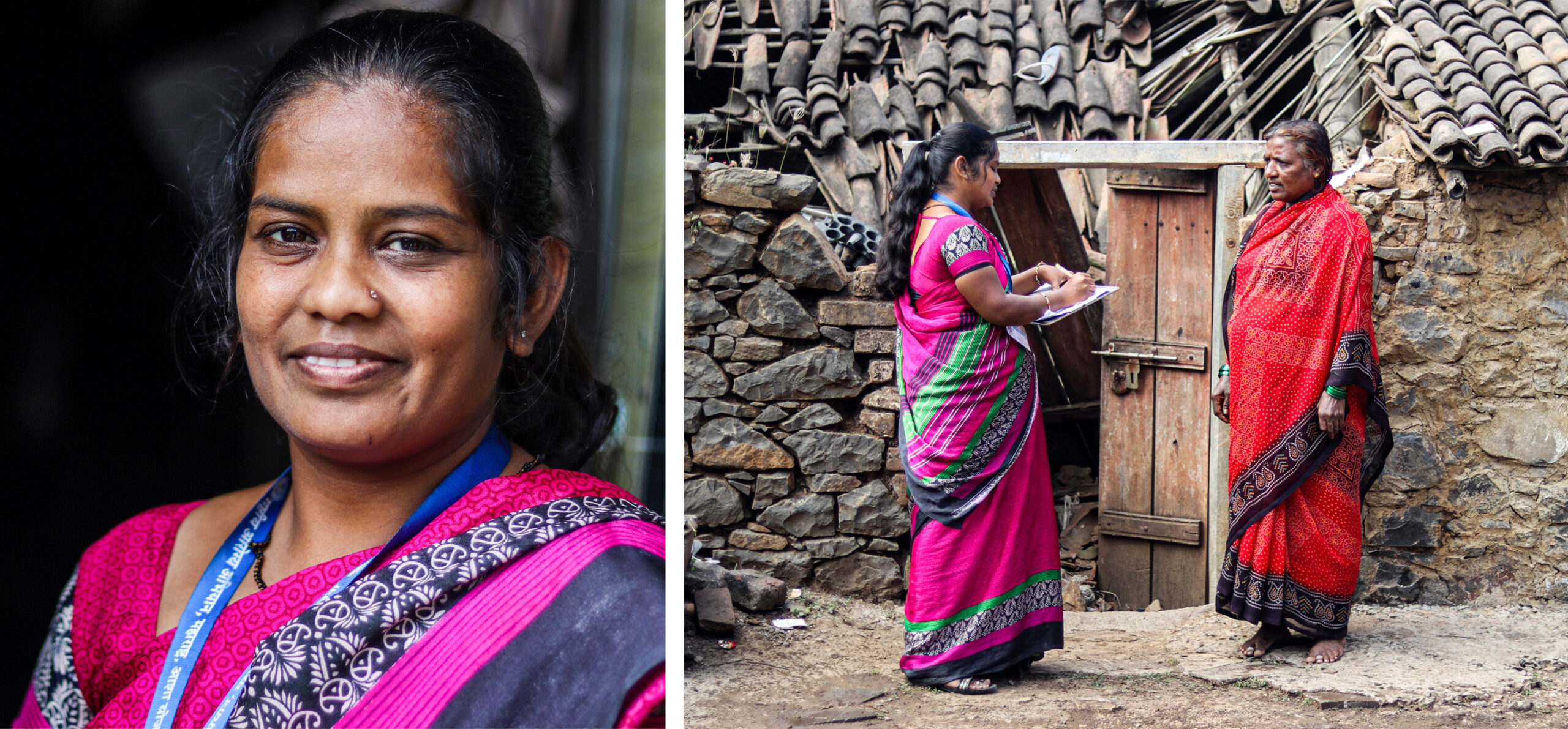
Over the next month, Terdale persisted—sending the husband videos about the impact of mental health on the overall well-being of an expectant mother and fetus. She also messaged him relevant news reports. After a few weeks, she increased the frequency of her messages.
He eventually changed his mind, and stopped bothering Koli with the demand for a male child. However, the damage was already done; she reported symptoms of depression.
Terdale continued to use WhatsApp to counsel Koli every few days: “When I wasn’t allowed to enter their house, WhatsApp helped me save her.”
When it comes to pregnancy, most people in India rely on the experiences of their friends or relatives for information, though “this experience-sharing becomes another potent way of sharing misinformation, especially when it’s not backed by science,” says Hemraj Patil, who has over a decade of experience in public health and previously worked with India’s National Health Mission.
When younger women are coerced by family into following superstitions—about what foods they can and can’t eat, or that they can’t buy new clothes, leave the house, or wear bangles in the first two trimesters—ASHAs counsel the pregnant women and ensure they receive proper science-backed health care. If conservative parents stop ASHAs from entering their houses, the ASHAs can use WhatsApp to remotely support pregnant women and then ask senior doctors or other community members to visit their homes. Notably, ASHAs are also using WhatsApp to create safer spaces for women through targeted group channels, where women share their personal experiences and speak candidly in ways they can’t anywhere else.
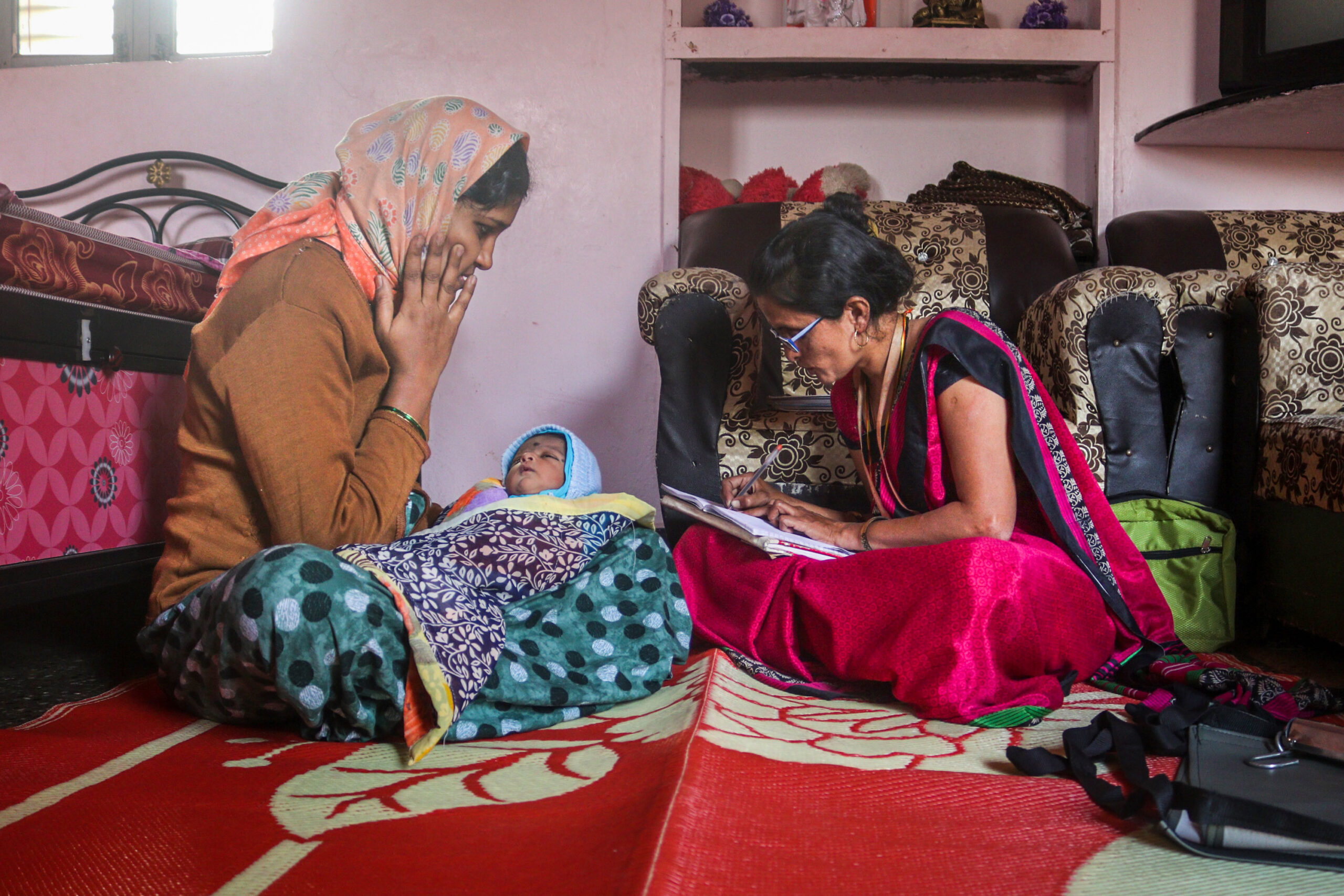
“Ever since ASHAs started using WhatsApp to bust misinformation, I’ve seen a positive change,” notes Patil. Last year, the World Health Organization honored ASHAs with the Global Health Leader award for their work on covid and in slashing India’s maternal mortality rate.
Koli is just one success story. After months of patiently counseling her, Terdale took her to the hospital to give birth in early 2022. “It was a male child,” says Terdale. “The case was no doubt challenging and risky, but I am proud I could change someone’s mind and make people think.”
Crucially, the effects of changing one mind are not restricted to a single family. “Whenever you enter someone’s house in a village, you are not just talking to that particular member, but also the neighbors, sometimes the entire community,” Terdale says with a laugh that implies the concepts of privacy and personal space remain a significant challenge in India’s villages.
Today, Terdale proudly says she is in touch via WhatsApp with over 60% of the women in the villages she oversees.
“We are health-care workers and hope for so many people. How can we fear and let them down?” Terdale asks. In many Indian languages, ASHA means hope.
“I started noting down the WhatsApp number of everyone in the community”
When she became an ASHA in 2009, Netradipa Patil, from Maharashtra’s Shirol region in western India, was immediately forced to grapple with pregnancy-related misinformation and superstitions.
During her field visits back then, Patil saw a few young women using WhatsApp. “I started noting down the WhatsApp number of everyone in the community,” she says. “Every day, many people would send ‘good morning’ wishes to me.” By sometime in 2014, she started to think: if they were already connecting on the messaging app, why not tackle misinformation there, too?
Such work would go above and beyond Patil’s job requirements. In 2005, the Indian government launched the National Rural Health Mission to improve maternal and infant health. Under this program, ASHA workers were appointed in 18 states; by 2009, the program had expanded to all 28 states. ASHAs, though, are technically volunteers and are not paid a fixed salary but rather receive “performance-based incentives” for completing tasks. In Maharashtra, for instance, they are paid just 1,500 Indian rupees ($18.50) for maintaining detailed records of every community member and 250 rupees ($3.70) for nine months of prenatal care for one patient and for facilitating hospital delivery. Payment is often delayed.
“We aren’t paid well,” Patil notes, “but that has never stopped us from saving lives.”
Despite the increased workload and the inadequate (or sometimes nonexistent) compensation for internet charges, Patil decided to try using WhatsApp in her work. “Before directly busting any misinformation, I started posting general bits of advice from doctors regarding pregnancy,” she says. To her surprise, many younger women replied to her personal messages and even thanked her.
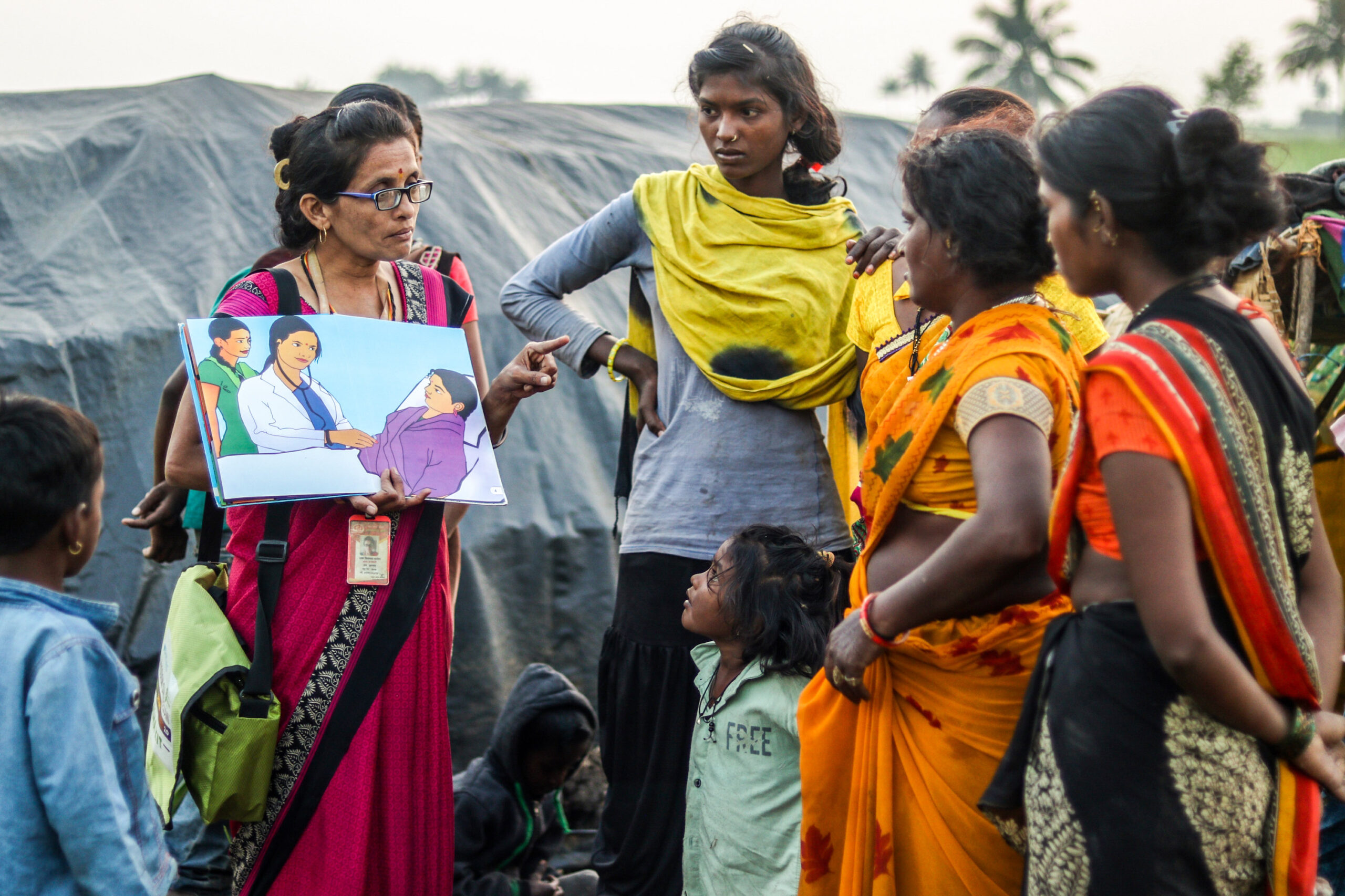
She then experimented by tackling the superstition that if a woman reveals her pregnancy to any health-care worker in the first trimester, she will face complications and be at risk of miscarriage. A few women challenged this—though many supported her.
Patil began spending several hours a day responding to all the doubts and apprehensions of community women. “It did take a lot of my time, but after two weeks, I saw a woman agreeing,” she says.
Patil, who is also a union leader of over 3,000 ASHAs, invited a few hundred workers from nearby villages to discuss how to use the technology. “I shared my experience of using WhatsApp and asked ASHAs to start experimenting in their communities,” she says. Many reported positive results, and their work picked up momentum in 2017 when WhatsApp introduced a feature to share photos and videos as a status.
The first time Patil posted a WhatsApp status—a motivational quote—she thought it was just another distraction in her long workday. An hour later, over 100 people had seen it. Just before the 24-hour mark, at which point the status gets archived, over 500 people had viewed it.
For a few days, she shared inspiring messages in Marathi and Hindi and remembers many people replying to say they found them helpful. That encouraged Patil to scale up her work from one-on-one texts, and it also gave her a feeling of recognition from her community.
She experimented more from there. One day, she shared an infographic of basic health-care precautions for pregnant women. “It got a tremendous response,” she says. “Many pregnant women wrote to me saying the health-care chart was beneficial, and they had even taken a screenshot.”
It has since become something of a best practice for ASHAs to share visually rich articles and posters via WhatsApp. “These drawings or photos stay in people’s minds,” says Patil. “Instead of sending a long message, we condense the information in a single flowchart or use infographics, and it does help.”
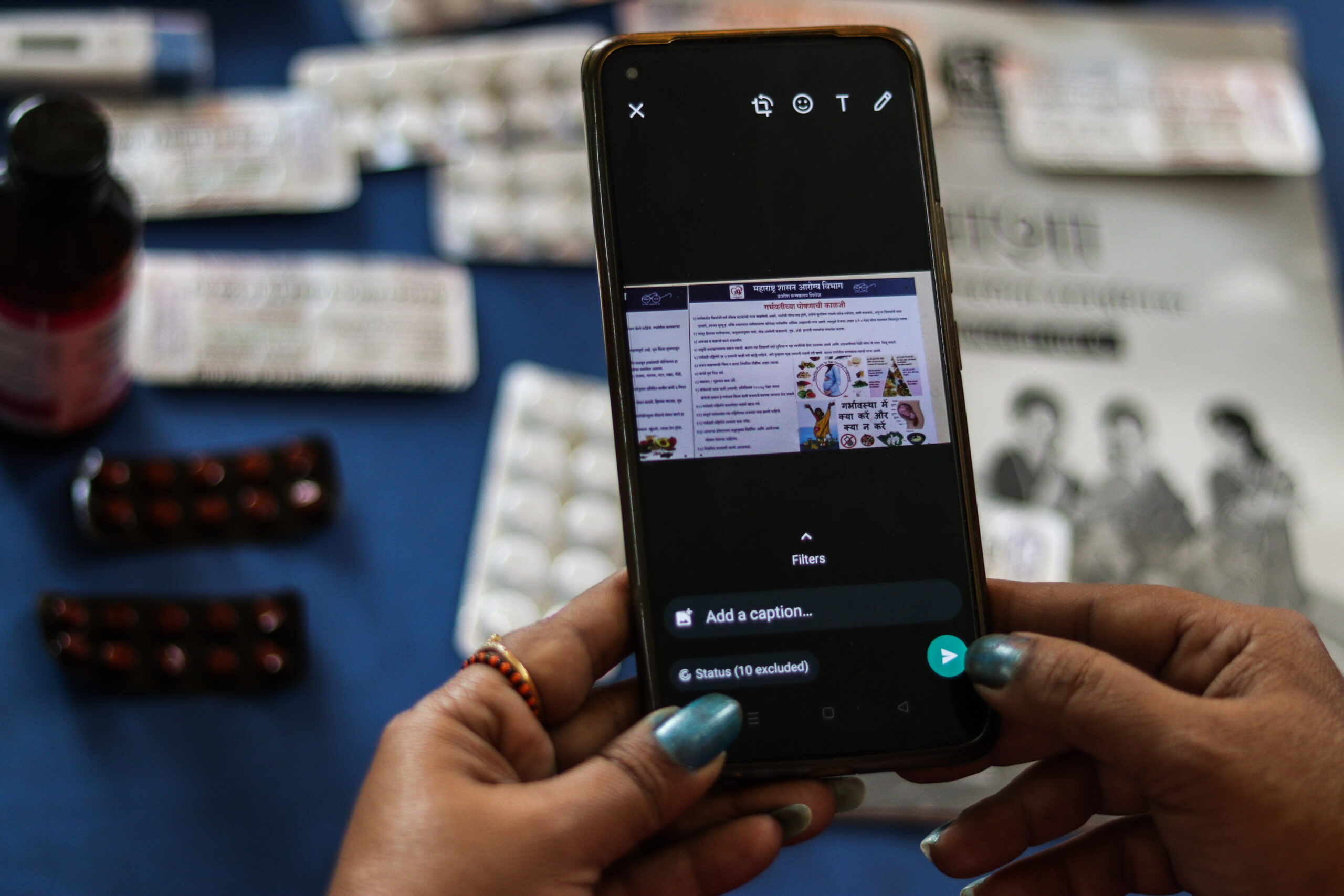
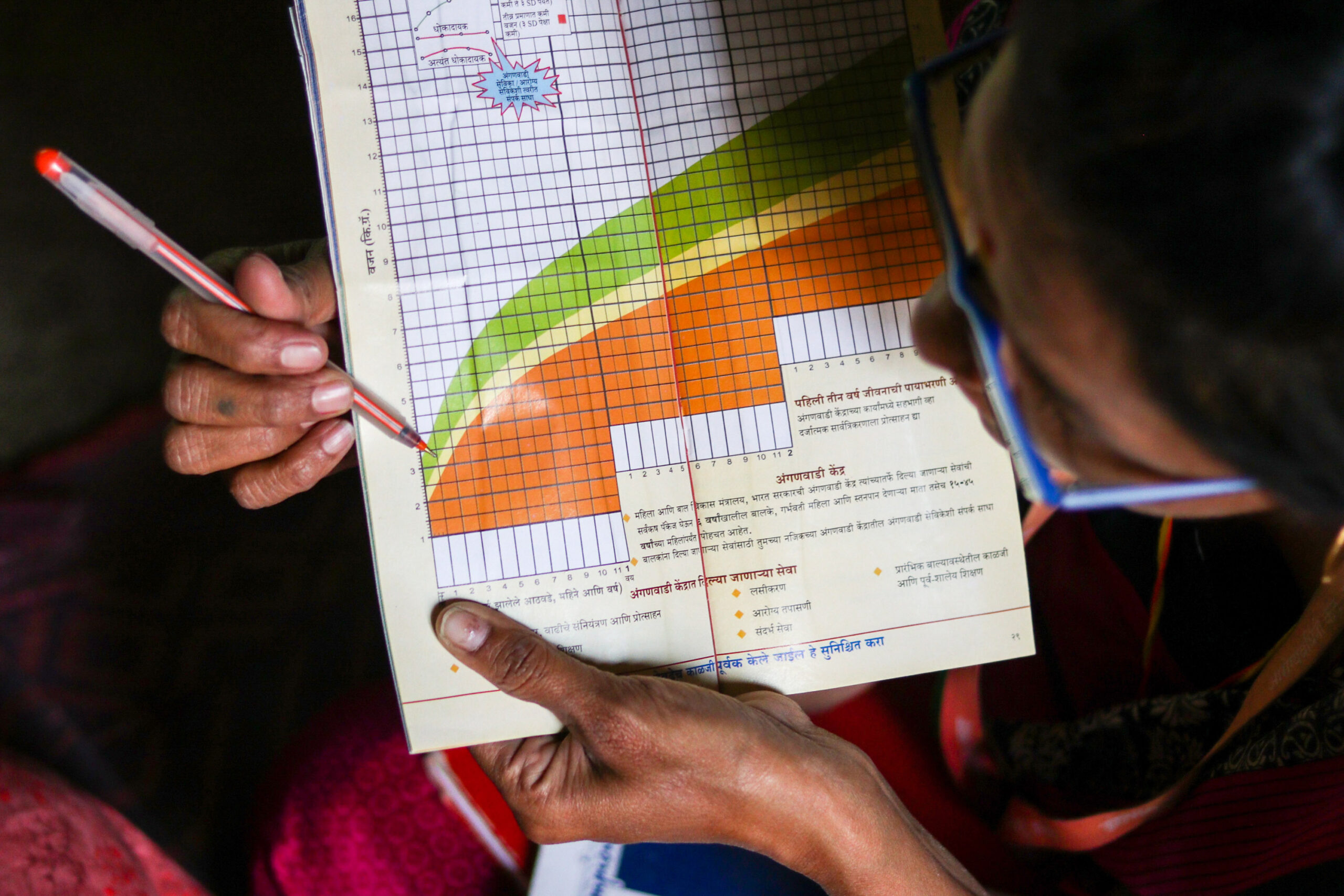
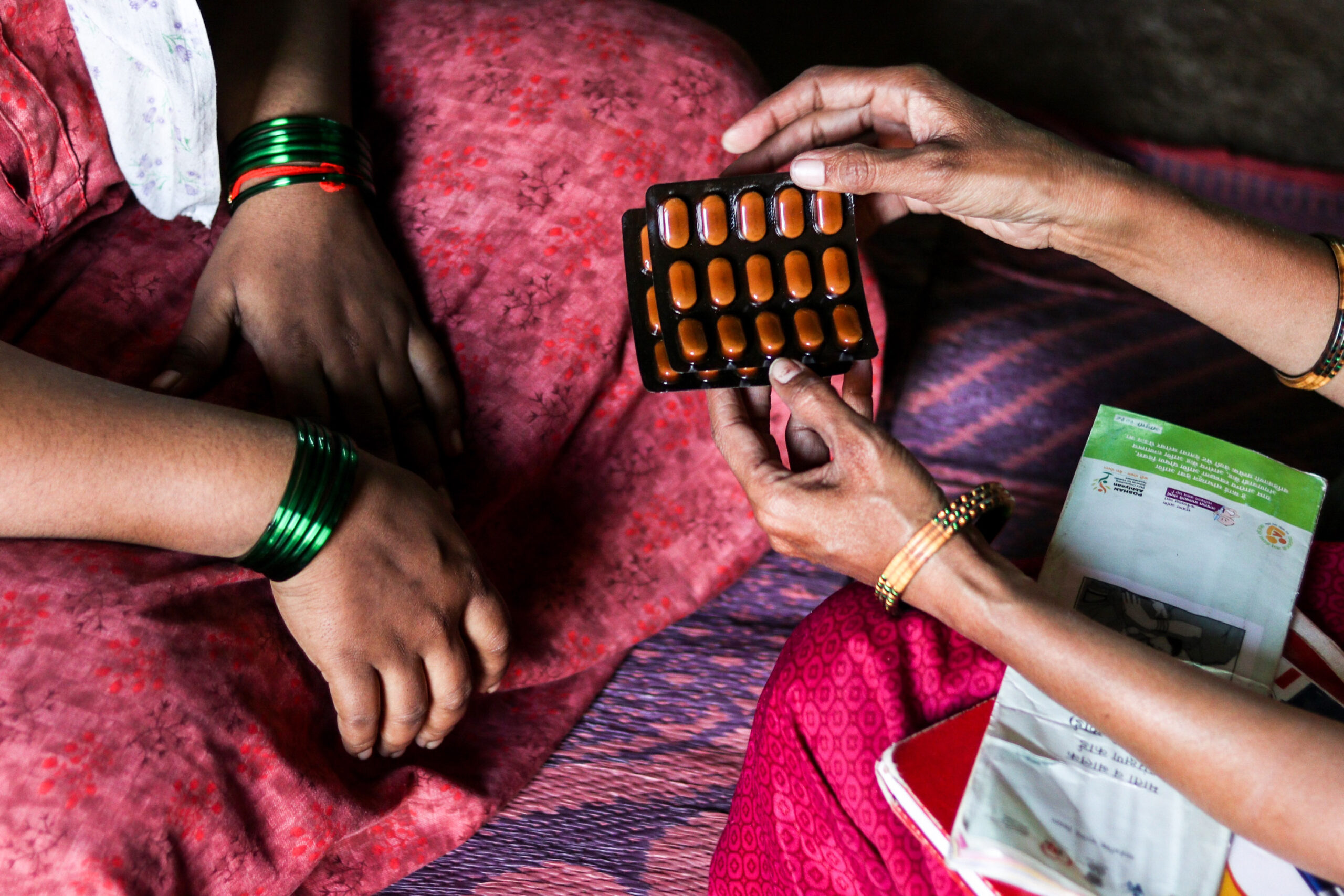
Another way ASHAs make their responses particularly effective and persuasive has been by sharing case studies of real patients who have followed their advice. “Give an example of someone who is either their friend or someone they trust,” says Terdale, the ASHA who worked with Koli. As a result, she says, the number of cases of people “blindly following superstitions and misinformation came down … Moreover, several people who benefited from our advice support us. So, there’s no fear of any backlash because we have a much stronger support system.”
Over the past five years, Patil has trained hundreds of ASHAs from different states to use WhatsApp to debunk false information.
Maya Patil, an ASHA from Maharashtra’s Kutwad village, says she’s noticed similar positive results after using WhatsApp. She’s been working in the field for 13 years, and in 2018 she met a woman in her ninth month of pregnancy with falling hemoglobin levels who had recently been diagnosed with anemia. She tried to connect the woman to the relevant public doctor, but the family wanted her to use natural methods to increase her hemoglobin levels.
Patil asked the pregnant woman to start drinking pomegranate juice, which has been proven to increase hemoglobin levels, but her mother said pomegranate juice causes kidney stones. Patil tried for several hours to explain the science, but the family wasn’t convinced, nor were they interested in anemia medications.
As a habit, Patil had been taking photos of hundreds of regional newspaper articles addressing common health misinformation that were written by doctors. In one, she found details about the benefits of pomegranate seeds and juice. She sent the pregnant woman the article in a WhatsApp message. Then she found more relevant YouTube videos recorded in Marathi, the woman’s language. After 10 such messages, she finally had an impact; the family allowed the woman to follow her advice, and within 12 days, her hemoglobin levels had increased.
They worked together for three weeks, and when the woman gave birth, it was a normal delivery with a healthy newborn weighing six-and-a-half pounds.
Creating a safer space for women
Though they had successfully addressed a great deal of misinformation over several years, many ASHAs were still seeing pregnant women who were too scared to talk about their pregnancies for fear of their in-laws and husbands. Even in big, ASHA-led group messages, many men in the community responded with “ill-informed comments,” says Netradipa Patil, the ASHA union leader.
Maya Patil similarly laments the persistence of dangerous medical information passed down by family. “The primary goal of any fake news related to pregnancy is to make women suffer,” she says. “Many older women say that they had suffered these rituals during their pregnancy, so why should the next generation not face this?”
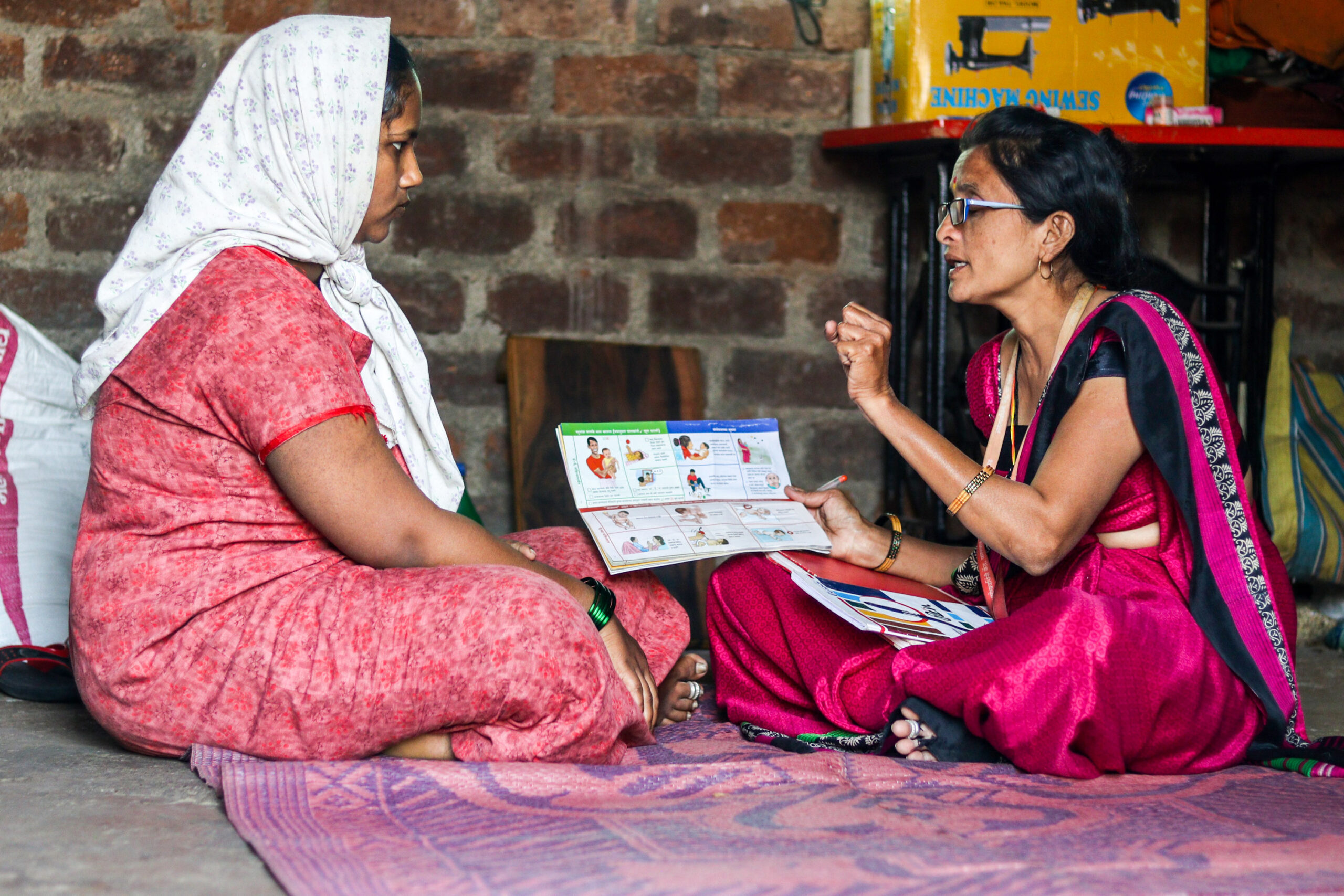
So, in 2018 and 2019, ASHAs started to form hyperlocal all-women WhatsApp groups. With a smaller group of just 15 to 20 pregnant women and their close female relatives, Netradipa Patil would focus on helping them understand the scientific aspects of care. “It was difficult, but easier than dealing with hundreds of people in one go.” After six months of test runs, women in the groups even reported talking about misinformation in their households.
Patil and several other ASHAs have created multiple groups; some are limited to a household and some include entire villages, others are meant only for pregnant women or only for ASHA workers and their supervisors.
The topics of conversation in these groups now go beyond health care; women share their dreams for the future, or ask ASHAs about how they can become financially independent or start small businesses. Many women also discuss workplace exploitation and ask ASHAs how to deal with it, or they ask about how to benefit from government welfare programs. These groups are particularly beneficial “when freedom is so restricted in many rural houses,” says Terdale.
ASHAs say one of their most important tasks is ensuring women aren’t abused for confronting traditional beliefs. Particularly in cases of family conflicts, many ASHAs use very careful and specific language to communicate with women. “Sometimes during fieldwork, we use a code language [with patients], which often means that there’s some family or medical issue which needs to be discussed personally,” Patil says. “We have been working for over a decade and have built a bond with everyone. None of this could have been possible if the community members [didn’t] trust us.”
Patil recalls one particularly dangerous case. Saniya Makandar, a woman with a high-risk pregnancy, was in an interfaith marriage that wasn’t accepted by their families, and many ASHAs wouldn’t work with her because they “feared attacks from religious fanatics,” Patil says. (To protect her safety, Makandar is being identified by a pseudonym.)
Patil had to build trust with Makandar and ensure her safety during treatment, even as frequent family clashes and religious fights weighed on her. Soon, Makandar opened up about her precarious condition. She didn’t know if she’d received certain vaccines, and she reported swelling in her legs, high blood pressure, extreme weakness, and even suicidal thinking. Patil found that her hemoglobin level had dropped to seven during a time in which it should have been 12 to 16 grams per deciliter.

Low hemoglobin during pregnancy remains a problem across India, but in Makandar’s case, misinformation made it more difficult to address. Patil discovered that she was eating only wheat flatbreads, due to a local superstition that the diet was healthy. While Patil prepared a proper diet chart for her, visiting her house daily wasn’t feasible because of the backlash Patil might face from her own Hindu community. So she decided, again, to turn to WhatsApp. “Every day, I started sending photos, videos, and articles on what food to eat.”
But just addressing the health myths wasn’t enough. So every day, Patil followed up with simple messages via WhatsApp, like, Are you feeling better today? Or, Is there something you want to share?
Such questions from ASHAs have had a tremendous impact on many women like Makandar, who had never opened up about their pregnancies, or their families and futures, before they began sharing their problems with the ASHAs and women in their WhatsApp groups.
After two months of intense work with Patil, Makandar’s health improved, and she gave birth to a healthy baby via cesarean section at the public district hospital.
“A message can save someone’s life,” says Terdale, “and we see it happening almost every day.”
Sanket Jain is an independent journalist and a documentary photographer based in India’s Maharashtra state. His work has appeared in more than 30 publications. He tweets at @snktjain.
